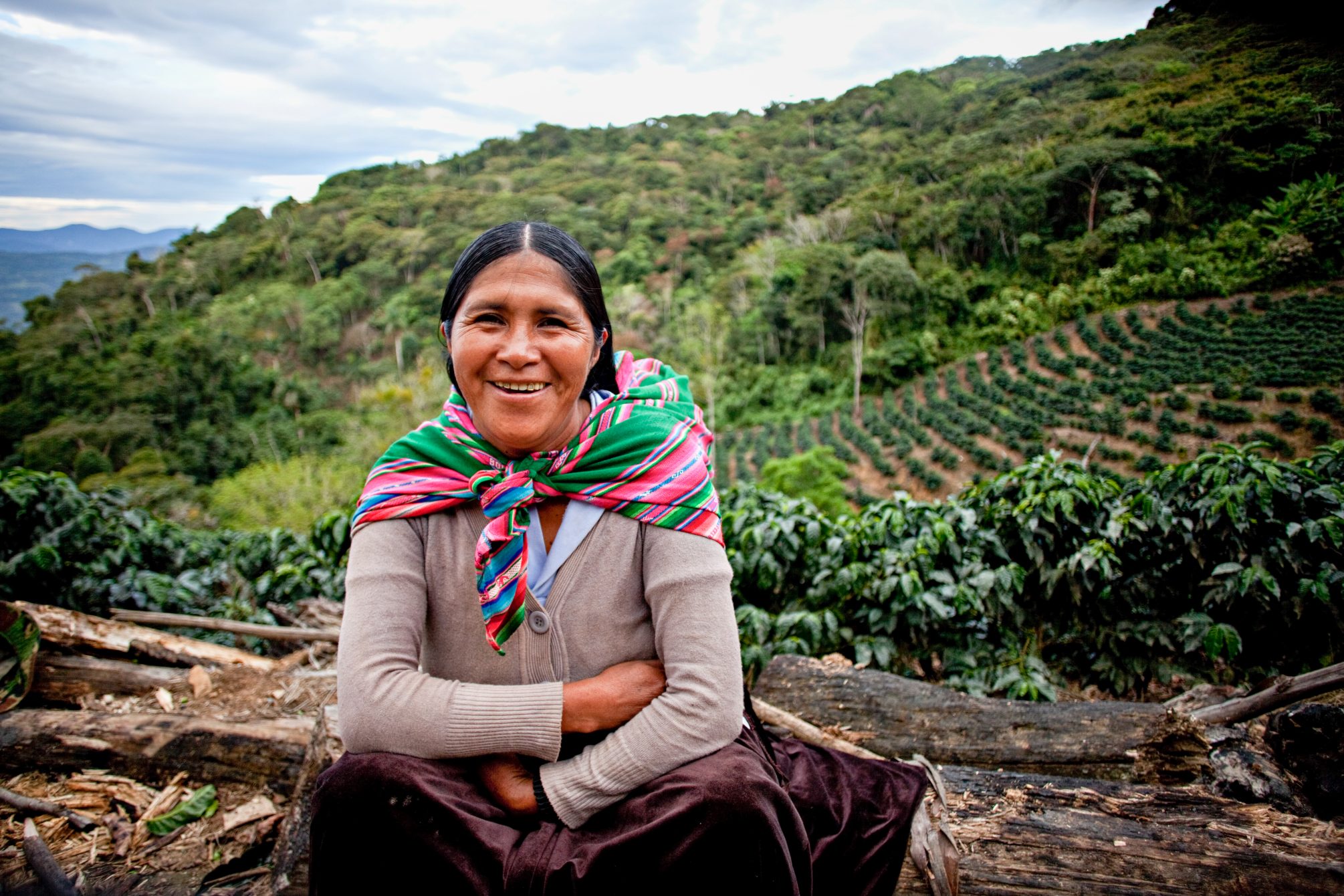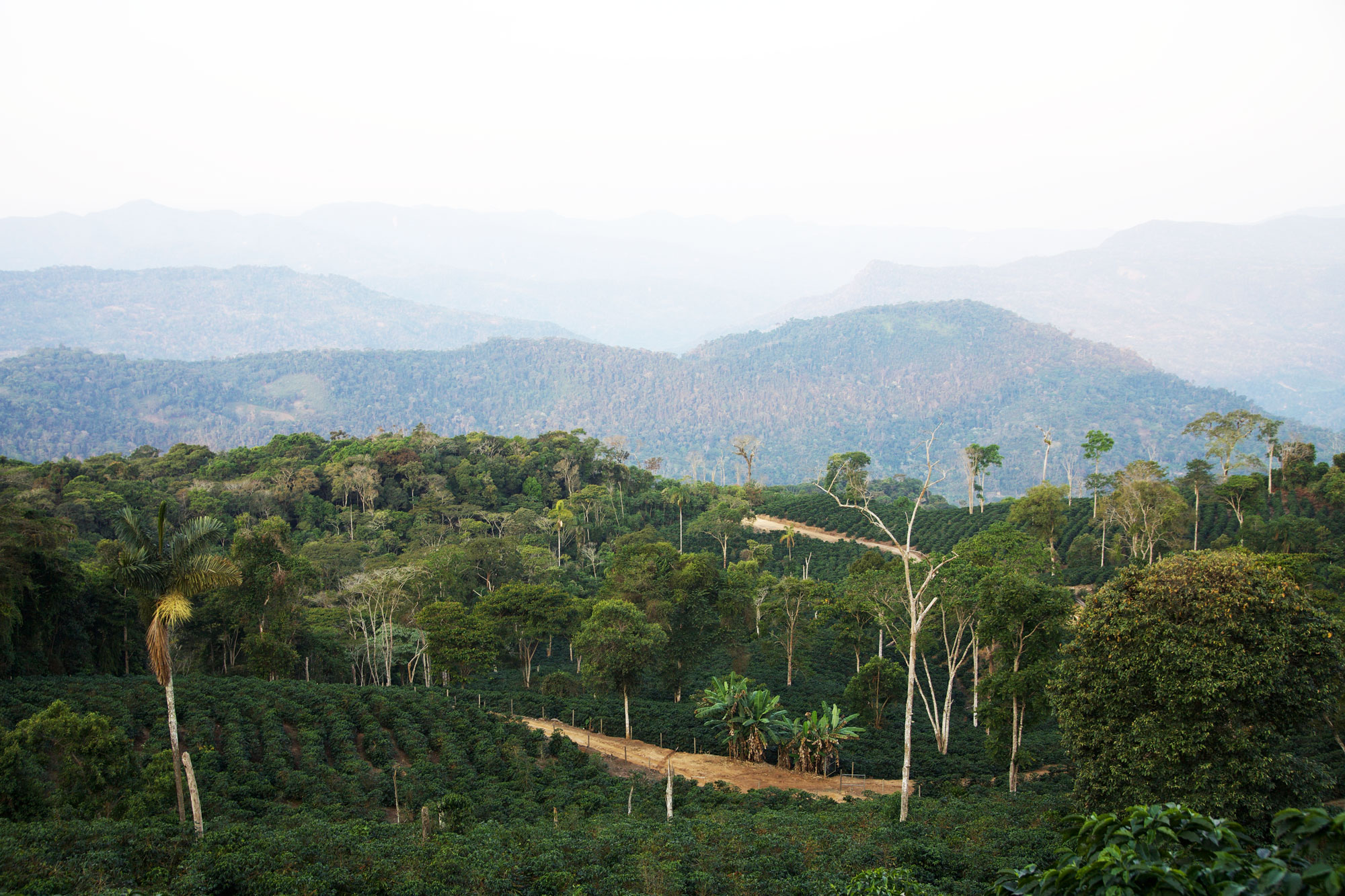Bolivia
Bolivia is one of our favourite origins and one that we feel very proud to represent.
Coffees from Bolivia are spectacular. They are always incredibly sweet and clean – the kind of coffees that you can drink, cup after cup, and keep coming back for more. We love their versatility and the diversity of their profiles. Some have a straight-up sugarcane and toffee sweetness, with balanced acidity, silky mouthfeel, and heavy, dark chocolate body. Others are more complex and winey, with lovely notes of berries and butterscotch bursting from the cup.
Part of what makes Bolivian coffee so distinct is that it is one of the highest elevation and lowest latitude coffees produced in the world. The region’s remoteness also means that high-yielding hybrid coffee varieties were never extensively propagated, and as a result, producers spent decades working exclusively with Typica and Caturra varieties, which are known for their exceptional flavour. In recent years, many producers have chosen to replace Typica trees with the more productive (but still delicious) Catuaí variety, while others have chosen to plant more exotic varieties like Gesha, Java and Ethiosar.
The harvest in Bolivia typically runs from June to October. All coffee on the farms is picked carefully by hand, in small quantities. Due to the high altitude and the varieties grown, the coffee cherries tend to ripen very slowly and at different rates, which means the farmers must do many passes throughout the season to ensure that they only pick cherries that have reached full maturity.
Many of the producers in Bolivia’s coffee-growing regions descend from the Aymara people, an indigenous nation with tremendous respect for the land, who were committed to organic farming practices long before there was any commercial incentive in it. The farms in Bolivia are tiny – typically between one and five hectares in size. For this reason, most of the farm management and harvesting is done by family members. It’s also quite common for many small farms to be grouped together in a ‘colonia’ (settlement). The sense of community in these settlements is very strong, and neighbouring farmers often collaborate and work on one another’s farms during the harvest.
History of Coffee in Bolivia
Coffee in Bolivia dates back to the 1880s. Though details are scarce, coffee was first produced for the consumption of wealthy landowners and their workers at estates in Los Yungas. The region was well-known for its coca production and coffee was not considered as profitable, as it is more difficult to grow and yields a smaller crop. It wasn’t until the 1930s that coffee production began to be taken seriously, as export tariffs on coca leaves and a drop in local consumption made farmers realise the risks of economic dependence on a single crop.
For many years, most coffee farms were owned by the same wealthy landowners that began production in the 19thCentury. This changed in 1953, when a government-led agrarian reform resulted in small parcels of land (1.5 – 8 hectares in size) being redistributed back to thousands of largely indigenous families. A migration of young people from urban areas towards Los Yungas followed, though very few of them had any knowledge of agriculture. The government went on to distribute reading material with very basic information on how to run a farm, and these remained the main source of education for Bolivian farmers for decades.
Over time, the lack of resources and information proved to be detrimental to the quality of the coffee produced. While Bolivia has the perfect conditions for producing great coffee, the focus on growing volumes during the 80s and 90s, resulted in many farmers failing to implement new infrastructure or modern farming practices. Yields and quality dropped significantly as the soil degraded over time. The country’s challenging geography didn’t help either. Historically, producers would pulp their coffee on their farms and then transport it to centralised processing stations, located far from coffee-producing areas. Often the coffee (which was still wet) would be exposed to extreme and changing temperatures as it was transported through varying altitudes and climate conditions on its long and winding journey through the mountains.
It wasn’t until the early 2000s that farmers were provided with the incentive and resources to focus on high-quality coffee production. This was kick-started by US-funded programs (as part of their anti-drugs campaign) and included building coffee washing stations and providing farmers with access to training facilities and financial assistance. The arrival of the Cup of Excellence program in 2004 also greatly helped to propel the industry forward and raise the profile of Bolivian coffee. This program would go on to be replaced by ‘The President’s Cup’ in 2010, and it remains a pivotal influence in the renewal of Bolivia’s coffee industry. As a result of these initiatives, quality-conscious producers have emerged and, with them, some spectacular coffees.
Challenges facing Bolivian Coffee Production
Coffee production in Bolivia has always been relatively low. Production peaked in 1989, when the country exported 125,000 bags. By the time we started sourcing coffee in Bolivia in 2010, annual exports were down to 66,000 bags (which, to put in perspective, is equivalent to the annual output of one large farm in Brazil). Over the last few years, this production has further decreased to a devastatingly low 22,000 bags per annum in 2020, that has since begun to stabilise.
There are several factors contributing to this decline. The most significant of them is that coffee competes with the local coca industry (grown for the drug trade) which is harvested year-round, is easier to pick and often yields higher profits for farmers. In the long term, the coca plantations have a devastating impact on the communities and the land; untouched rainforest is often illegally destroyed to plant coca, and a lack of shade trees leads to huge problems with erosion. The excessive use of biocides by coca producers – in an effort to bolster their crops – also renders the soil infertile over time. The land is then abandoned as nothing else can be grown there.
The absence of a strong centralised body that heavily supports and promotes coffee production also threatens the vitality of the coffee trade in Bolivia. Unlike other coffee-producing countries like Guatemala and Brazil, coffee producers in Bolivia receive little to no support from the government or national agricultural bodies. Historically, a lot of support was given to Bolivian coffee by the US (in an attempt to encourage the growth of alternative crops to coca) but when President Evo Morales (himself an ex-coca grower) came to power in 2006, he soon stopped all US aid to his country.
These factors, along with poor infrastructure, changing climate conditions, the presence of roya (leaf rust) and traditional, less sophisticated farming practices have led to a significant decrease in production over the past decade.
The good news is that there is hope for the future of coffee in Bolivia, thanks to the vision, determination and hard work of our supply partners.
Our Supply Partners
Since 2009, we have worked in partnership with Pedro, Daniela and Pedro Pablo Rodríguez of Agricafe who have dedicated their lives to ensuring there is a future for specialty coffee in Bolivia, despite the considerable challenges facing the local industry. To combat the falling production, the Rodríguez family adopted a two-pronged approach. First, the Rodríguez family introduced a mentoring program called Sol de la Mañana, which focuses on giving small producers the training, technical assistance, and skills to renovate their farms and improve the quality and quantity of their output. Established in 2014 with 15 producers, the program has now grown to 200 members across Bolivia. Coffee is now a profitable and sustainable source of income for these families, as their output has grown from an average of 2.5 bags of coffee per hectare to one of 20 bags per hectare.
The Rodríguez family have also invested in establishing their own coffee farms, planting dozens of hectares of coffee trees in Bolivia’s countryside. Currently, the family own and manage a total of 12 farms as part of their “Fincas Los Rodríguez” – 8 in the La Paz department, and 4 in Santa Cruz. Not only do these farms guarantee a healthy supply of coffee, but they also serve as a model for local producers to observe, allowing the family to physically demonstrate how to build and manage an efficient, sustainable and profitable farm. Every year, we aim to purchase coffees from the same small Sol de La Mañana producers, along with a selection of lots from the Los Rodríguez farms.
Key Coffee Growing Regions
Bolivia has the ideal conditions for producing exceptional coffee. The country’s coffee-growing regions have nutrient-rich soil, sit at high elevations (1,400 – 2,100m above sea level) and experience wide daily temperature ranges. The Bolivian coffees we source come from the Caranavi and South Yungas provinces, in the department of La Paz; and from Samaipata, in the department of Santa Cruz.
LOS YUNGAS – LA PAZ
The department of La Paz is located in Bolivia’s west, where it borders Peru. Some 90% of the country’s coffee production is grown here, mostly in the Los Yungas region (which translates to “warm valley” in the local Aymara language), along the Andean Mountain ranges. The terrain here is densely forested and extremely hilly, making access a challenge. The climate in the department of La Paz is rainy and humid, creating stellar conditions for coffee cherries to ripen at a steady rate, but is less than ideal for drying coffee without mechanical assistance. Our focus is largely on the province of Caranavi (found between 1,400 – 1,800m above sea level), which is a 5 hours’ drive away from capital La Paz. This memorable journey out of the El Alto airport in the city of La Paz to Caranavi is made up of winding roads, sharp turns and plenty of terrifying cliffside views – reminding us just how difficult the terrain in Bolivia can be.
Here, long-time partner and friend Pedro Rodríguez and his family own and manage 8 of the “Fincas Los Rodríguez” farms. Caranavi also serves as the centre of operations for the Sol de la Mañana program. Producers who contribute to the program own farms in both Caranavi and South Yungas (found a little higher at 1,600-2,100m above sea level), and many of them process their coffee at the Rodríguez family’s wet mill Buena Vista, which is located outside of Caranavi’s town centre. From here, once they have been processed and dried, coffees make the long journey back to the city of La Paz on truck, to be milled and stored awaiting for export at Agricafe’s state-of-the-art dry mill, La Luna. Coffees from La Paz have a clean structure and winey acidity and tend to have fruit-driven flavour notes.
SAMAIPATA – SANTA CRUZ
The department of Santa Cruz is found in the country’s east, and borders Brazil to the north and Paraguay to the south. It is the largest of Bolivia’s departments and has experienced rapid economic growth over the last 50 years, thanks to its rich natural resources. In Santa Cruz we focus on the region of Samaipata (which sits 1,600 – 1,800m above sea level), where the Rodríguez family owns and manages the remaining 4 of the “Fincas Los Rodríguez” farms. The region has fairly extreme climate, as temperatures can soar up to 30°C during the day and drop down to 8°C overnight. This creates an interesting effect in cherry maturation, as the high temperatures lead to higher sugar development, while the cooler temperatures help to slow down the ripening process. Coffees from Santa Cruz are rich and bold, with a full mouthfeel and notes of red fruits and milk chocolate.













